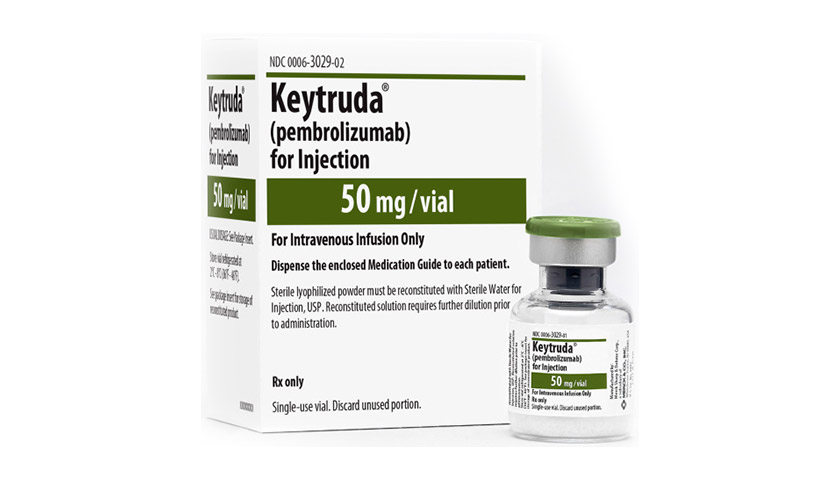 |
| Immune checkpoint inhibitors like Keytruda have improved the prognoses for many cancer patients but carry greater risks of ocular adverse effects. Photo: Merck. Click image to enlarge. |
A recent analysis using real-world data investigated the incidence of ophthalmic adverse events (AEs) following immune checkpoint inhibitor (ICI) therapy and the impact on overall survival. Cancer patients routinely use this class of medications to help their immune systems better target tumor cells. ICIs prevent T-cells from being duped by cancer cells into thinking they are benign.
Findings from this retrospective cohort study, published in American Journal of Ophthalmology, showed a higher frequency of ophthalmic AEs involving the anterior segment vs. the posterior segment, regardless of ICI class. These adverse events may also indicate reduced survival.
“This insight could help guide clinicians aggressively manage [immune-related] AEs and allow patients to continue immune checkpoint inhibitor therapy despite having ocular issues,” the study authors wrote in their paper.
The study included patients who developed ophthalmic immune-related AEs within one year after the first instance of ICI therapy and used data obtained from an aggregated electronic health records database.
Among the 41,020 study participants, 57.4% were male with a mean age of 65.2 ±11.9 years. The five most prevalent ophthalmic immune-related adverse events were dry eye syndrome (2%), conjunctivitis (0.87%), blepharitis (0.51%), anterior uveitis (0.39%) and keratitis (0.38%). Across all immune checkpoint inhibitor classes, dry eye syndrome was the most common AE linked to the therapy.
Study authors reported that patients receiving CTLA-4 inhibitor plus PD-1 inhibitor and CTLA-4 inhibitors experienced higher rates of anterior uveitis (1.39% and 1.29%, respectively) when compared with PD-1 (0.27%) and PD-L1 inhibitors (0.14%) within one year following immune checkpoint inhibitor therapy.
Additionally, data revealed that ophthalmic immune-related AEs were associated with a significant decreased chance of survival.
While acknowledging prior studies with similar findings, the researchers did note that “our research successfully identified the most common ophthalmic adverse events with various types of cancers in a large cohort of patients,” the AJO article states. “Overall, these events are uncommon and may allow symptomatic evaluation with attempts to maintain patients on these novel therapies without halting them for eye-specific findings in many situations.
“Although rare, the presence of neuro-ophthalmic, corneal and ocular surface immune-related adverse events correlated with decreased survival and may serve as an indicator of disease resistance and the need for an altered treatment course,” they concluded. This insight could aid both oncologic and eyecare providers to promptly recognize immune-related AEs “and initiate a more collaborative multidisciplinary care to manage these side effects without discontinuing the immune checkpoint inhibitor.”
| Click here for journal source. |
Quiruz L, Yavari N, Kikani B, et al. Ophthalmic Immune-Related Adverse Events and Association with Survival: Results from a Real-World Database. Am J Ophthalmol. September 11, 2024 [Epub ahead of print]. |


